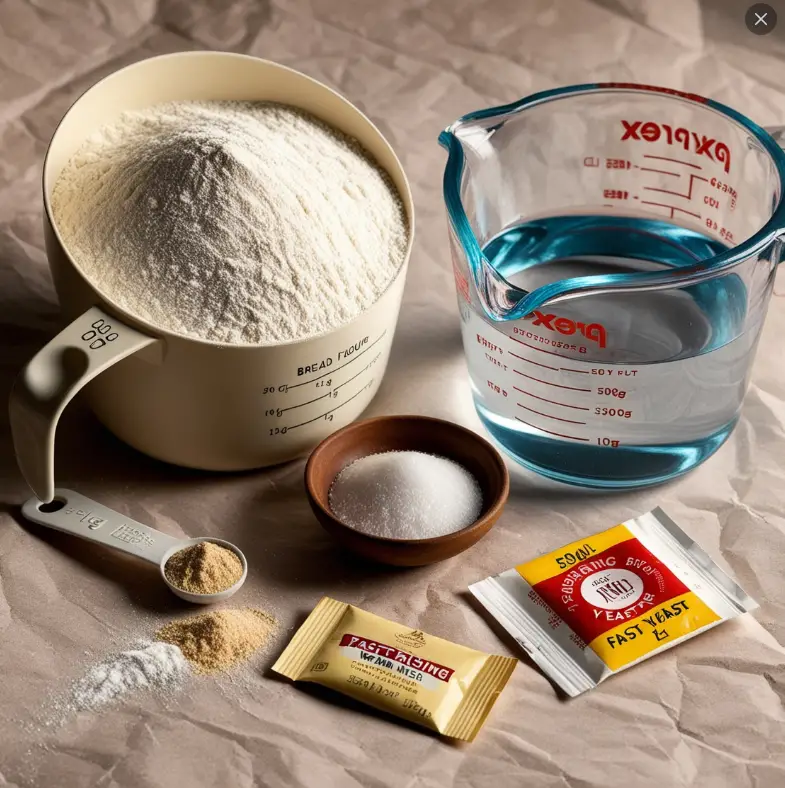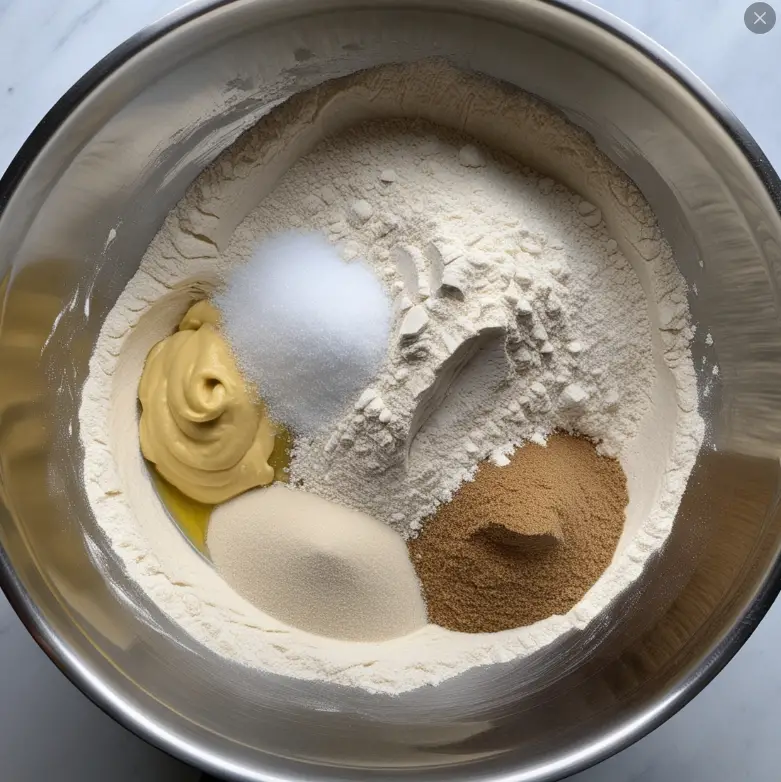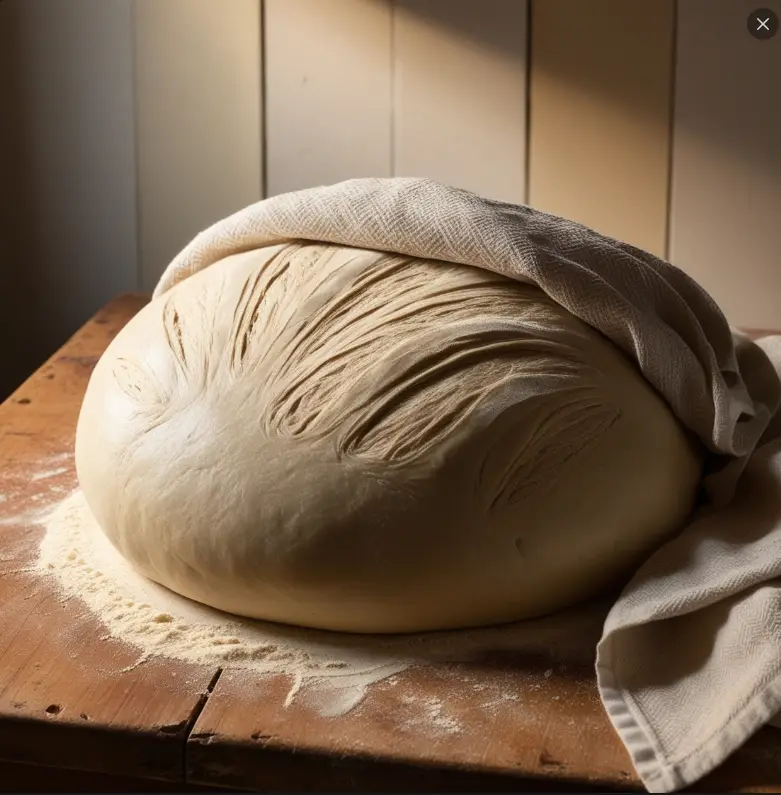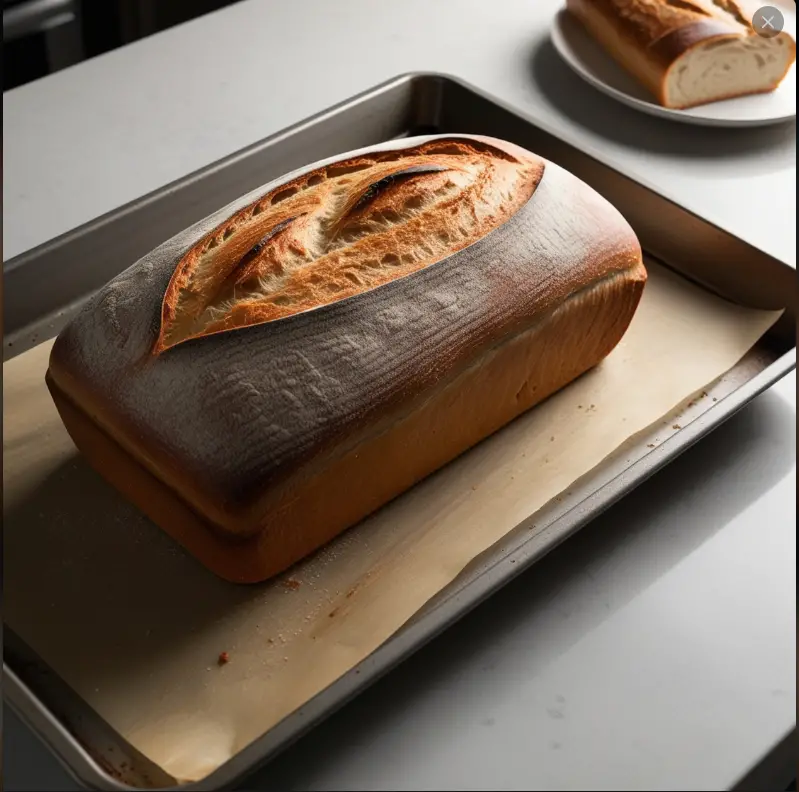Sourdough bread has been a staple in many cultures for centuries, prized for its unique flavor, texture, and nutritional benefits. Traditionally, sourdough relies on natural fermentation, which can be a lengthy process. However, with the introduction of fast-rising yeast, you can enjoy the delightful taste of sourdough in a fraction of the time. This recipe will guide you through the easiest way to make sourdough bread using fast-rising yeast.

Nutritional Value
Sourdough bread offers several nutritional benefits that make it a healthier choice compared to regular bread:
– Probiotics: Traditional sourdough contains beneficial bacteria that can aid in digestion. While fast-rising yeast may not offer the same probiotic benefits, it still provides a healthier option than commercial bread.
– Lower Glycemic Index: Sourdough bread has a lower glycemic index, which helps manage blood sugar levels.
– Rich in Nutrients: Sourdough is a good source of vitamins and minerals, including B vitamins, iron, and magnesium.
– Digestibility: The fermentation process breaks down gluten, making sourdough easier to digest for those with mild gluten sensitivities.
Introduction
Making sourdough bread with fast-rising yeast is a convenient way to enjoy the rich flavors and health benefits of sourdough without the lengthy fermentation process. This method is perfect for beginners or anyone looking for a quicker way to bake delicious sourdough bread at home. With just a few ingredients and simple steps, you can have a fresh, homemade loaf ready in no time.
Ingredients
To make sourdough bread with fast-rising yeast, you will need the following ingredients:
– 500g bread flour (or all-purpose flour)
– 10g salt
– 7g fast-rising yeast
– 350ml warm water
– 50g sourdough starter (optional, for enhanced flavor)
– 
Method
Follow these easy steps to bake your sourdough bread:
Mix the Dry Ingredients
: In a large mixing bowl, combine the flour, salt, and fast-rising yeast. If using a sourdough starter, mix it into the warm water first before adding to the dry ingredients.
2. 
Add Water
: Gradually add the warm water to the dry mixture, stirring with a wooden spoon or your hands until a rough dough forms. Ensure all the flour is incorporated.
Knead the Dough
Turn the dough onto a lightly floured surface and knead for about 10 minutes, or until it becomes smooth and elastic. This step is crucial for developing the gluten structure, which gives the bread its chewy texture.

First Rise:
Place the dough in a lightly oiled bowl, cover with a damp cloth, and let it rise in a warm place for about 1 hour, or until it doubles in size.
Shape the Dough: After the first rise, punch down the dough to release any air bubbles. Shape it into a round or oval loaf and place it on a baking sheet lined with parchment paper.
Second Rise: Cover the shaped dough with a damp cloth and let it rise for another 30 minutes, or until it has doubled in size again.

Preheat the Oven: Preheat your oven to 220°C (430°F). Place a baking stone or an inverted baking sheet in the oven to heat up.
Score the Bread: Using a sharp knife, make a few shallow slashes on the top of the loaf. This allows the bread to expand during baking.
Bake the Bread: Transfer the loaf onto the preheated baking stone or sheet. Bake for 25-30 minutes, or until the bread is golden brown and sounds hollow when tapped on the bottom.

Cool the Bread: Let the bread cool on a wire rack before slicing. This helps to set the crust and improve the texture of the bread.
Body
This easy sourdough bread recipe leverages the power of fast-rising yeast to significantly cut down the preparation time while still delivering a loaf that boasts the signature tangy flavor and chewy texture of traditional sourdough. The use of fast-rising yeast not only speeds up the fermentation process but also ensures a reliable rise, making it an excellent option for home bakers of all skill levels.
The incorporation of a sourdough starter, though optional, can enhance the depth of flavor, bringing a touch of authenticity to the loaf. The method outlined here simplifies the bread-making process, breaking it down into manageable steps that anyone can follow.
Conclusion
Making sourdough bread at home has never been easier thanks to fast-rising yeast. This method allows you to enjoy the rich, complex flavors of sourdough without the lengthy waiting times typically associated with traditional sourdough baking. Whether you are a seasoned baker or just starting out, this recipe offers a straightforward approach to creating delicious, homemade sourdough bread that is sure to impress.
Frequently Asked Questions
1. Can I use whole wheat flour instead of bread flour?
Yes, you can substitute whole wheat flour for bread flour. However, whole wheat flour absorbs more water, so you may need to adjust the water quantity slightly.
1. What if I don’t have a sourdough starter?
The sourdough starter is optional. If you don’t have one, you can still make this recipe with just the fast-rising yeast.
1. How do I store leftover sourdough bread?
Store leftover bread in an airtight container at room temperature for up to 3 days. For longer storage, you can freeze the bread for up to 3 months.
1. Can I add other ingredients to the dough?
Absolutely You can add ingredients like seeds, nuts, dried fruit, or herbs to customize your sourdough bread.
1. How can I tell if my bread is fully baked?
The bread is done when it is golden brown and sounds hollow when tapped on the bottom. An internal temperature of 95°C (200°F) is a good indicator of doneness.
1. Can I use this recipe to make sourdough rolls instead of a loaf?
Yes, you can shape the dough into rolls instead of a loaf. Adjust the baking time to 15-20 minutes, or until the rolls are golden brown.
Enjoy your homemade sourdough bread, and happy baking
